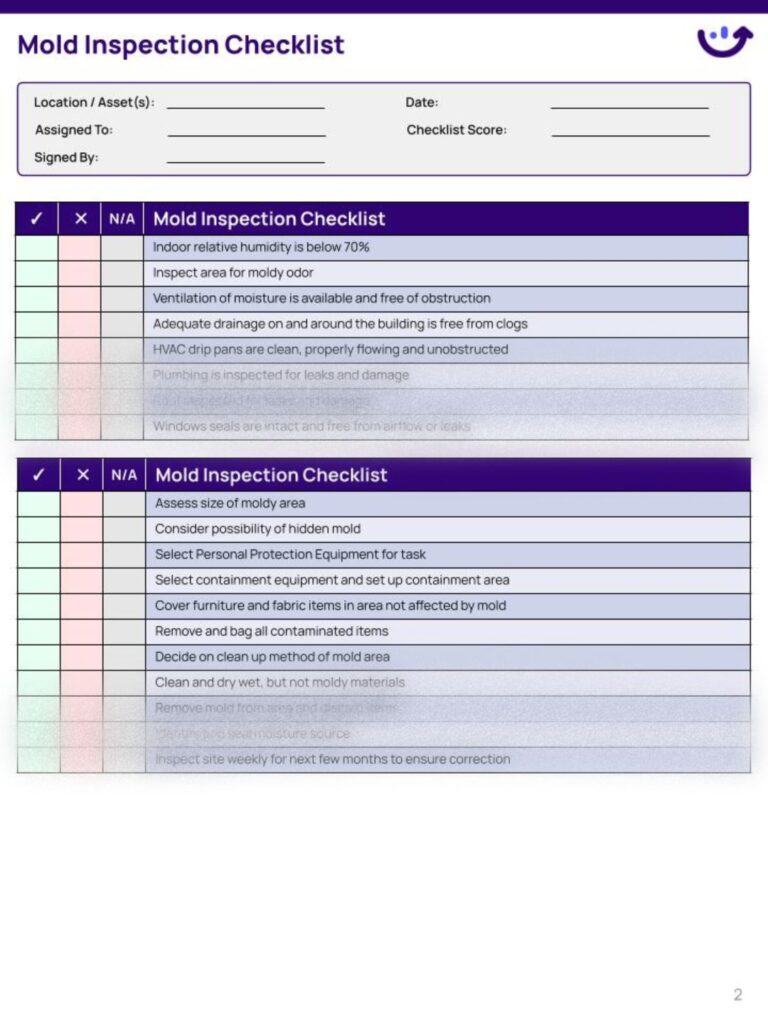
Are you dealing with mold issues? Make sure to check out our detailed mold inspection checklist to ensure a thorough assessment of your property and effective mold remediation plan. Keep your space safe and healthy with our expert tips and guidance.
Essential Steps for a Comprehensive Mold Inspection Checklist
Essential Steps for a Comprehensive Mold Inspection Checklist
- Start by conducting a visual inspection of the property to identify any visible signs of mold growth.
- Use moisture meters and thermal imaging cameras to detect any hidden water leaks or moisture issues.
- Check areas prone to mold growth, such as basements, bathrooms, and kitchens.
- Inspect HVAC systems, ductwork, and insulation for mold contamination.
- Test air quality using mold testing kits or by hiring a professional mold inspector.
- Take samples of suspected mold for laboratory analysis to determine the type and concentration of mold present.
- Develop a remediation plan based on the findings of the inspection and testing.
- Implement proper mold remediation techniques following industry best practices and guidelines.
- Conduct post-remediation inspection and testing to ensure that the mold problem has been effectively addressed.
- Provide recommendations for preventing future mold growth and maintaining a healthy indoor environment.
By following these essential steps in a comprehensive mold inspection checklist, property owners can effectively identify and address mold issues in their homes or buildings.
Frequently Asked Questions
What should I look for during a visual inspection for mold in my home?
During a visual inspection for mold in your home, look for any visible signs of mold growth such as discoloration, musty odors, and water damage. Additionally, inspect areas with high moisture levels like bathrooms, kitchens, and basements.
How often should I conduct a mold inspection using the checklist provided in Mold Solutions Guide?
You should conduct a mold inspection using the checklist provided in Mold Solutions Guide at least once a year.
Are there specific areas in a house that are more prone to mold growth that I should pay extra attention to during an inspection?
Yes, there are specific areas in a house that are more prone to mold growth. Pay extra attention to areas like bathrooms, kitchens, basements, attics, and areas with poor ventilation during an inspection for mold issues.
Can the Mold Solutions Guide checklist help me identify hidden mold sources that may not be immediately visible?
Yes, the Mold Solutions Guide checklist can help you identify hidden mold sources that may not be immediately visible.
Is it necessary to hire a professional inspector if I already have access to the Mold Solutions Guide checklist for mold inspections?
Yes, it is recommended to hire a professional inspector in addition to using the Mold Solutions Guide checklist for mold inspections.
In conclusion, ensuring a thorough mold inspection is a crucial step in maintaining a healthy indoor environment. By following a comprehensive checklist and addressing any issues promptly, you can prevent mold growth and protect your home and family. Remember, early detection and remediation are key to avoiding costly damages and potential health risks associated with mold. Stay proactive and vigilant in tackling mold problems to create a safe and mold-free living space for years to come.
![]()